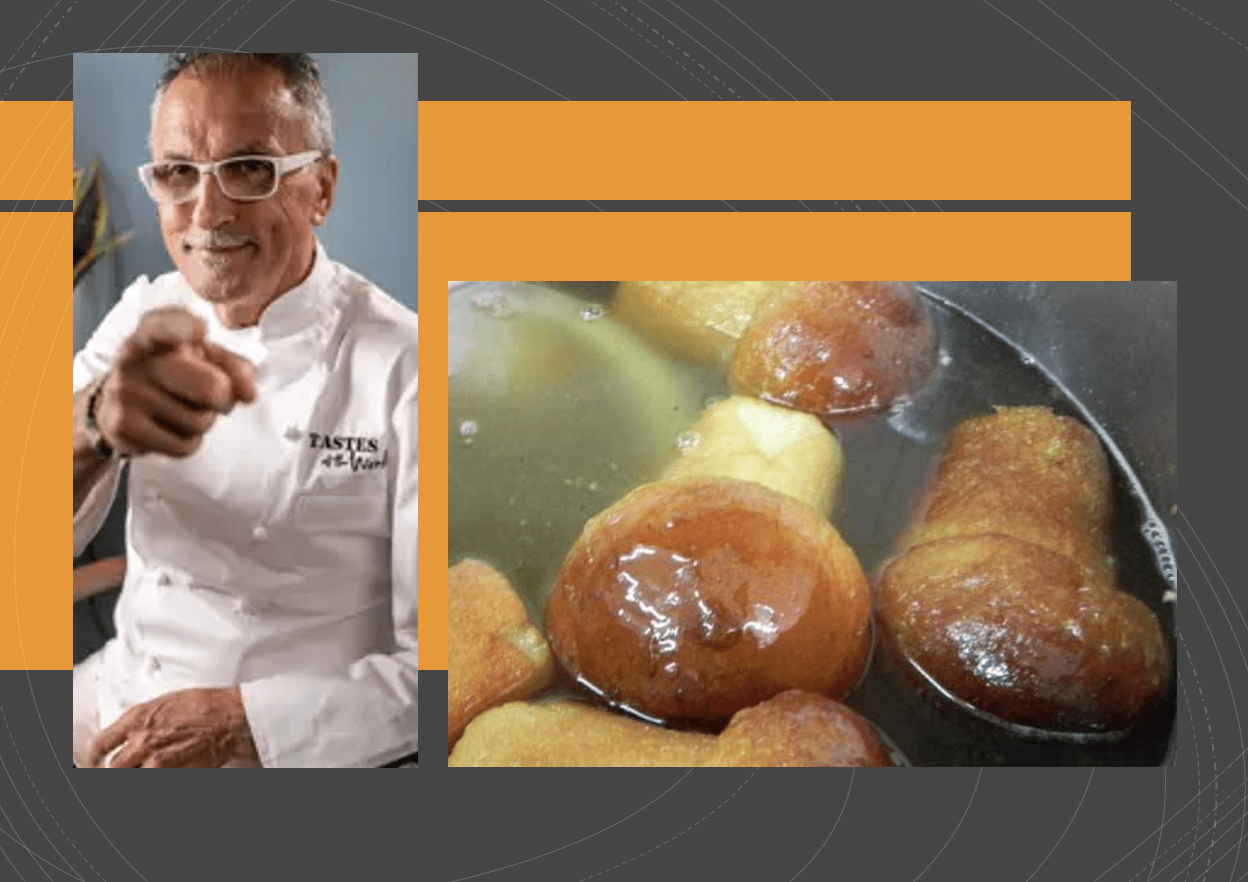Search Posts
Recent Posts
- Out and About in RI: Former Pawtucket Mayor Henry Kinch Tribute in Photos June 24, 2025
- Rhode Island Weather Forecast for January 24, 2025 – Jack Donnelly June 24, 2025
- ART! Mark Freedman, first featured artist of Summer Art Shows at Charlestown Gallery June 24, 2025
- The Bellevue Hotel: Procaccianti Co. New Luxury Boutique Hotel Set for Newport’s Iconic Bellevue Ave June 24, 2025
- Mike Stenhouse, CEO of RI Center for Freedom & Prosperity, named into College Baseball Hall of Fame June 24, 2025
Categories
Subscribe!
Thanks for subscribing! Please check your email for further instructions.

Ask Chef Walter: The history of Baba’ with rum – Walter Potenza
by Executive Chef Walter Potenza, contributing writer
Photo: The baba’, with its distinct mushroom shape reminiscent of the dome of St. Sofia’s Church in Constantinople, is a unique Neapolitan delicacy that demands attention. (F+K Proprietary Image)
Friends:
The baba holds a special place in Naples, so much so that it has become a part of everyday language. A Neapolitan might compliment your sweet and helpful character by saying ‘si nu’ babbà’ (you are a baba) or use the term to describe a particularly charming object or a marvelous view. This dessert is so highly regarded that it has become an authentic icon of the city, transcending its role as a mere dessert.
With its unmistakable mushroom shape, inspired by the dome of St. Sofia’s Church in Constantinople, the baba is a leavened oven-baked sweet soaked in an alcoholic liquid (traditionally rum or limoncello).
Even though everyone associates it with the South of Italy, baba – whose name allegedly derives from that of Ali Babà – originally came from Central Europe: it would seem that, at the Duke of Lorraine’s court, Polish-born Stanislao Leszczinski, father-in-law to Louis XV of France following the King’s marriage to his daughter Maria, was rather partial to a slice of kugelopf, a typical Alsatian sweet whose dough is similar to that of panettone without the dried fruit and candied peel.
Legend has it that, tired of the usual taste of Madeira sponge cake, he dipped it into a Marsala-type liqueur, and voilà, the forerunner of baba, was served up. A few years later, the court pastry chef Nicholas Stohrer opened a pastry shop in Paris – where the royal family had moved to in the meantime – at number 51 rue Montorgueil: people continue to queue up in this shop today to buy baba, served in the shape of a doughnut with fresh fruit in the center and soaked in rum instead of Madeira.
It was then brought to Naples by the “monsù,” as the chefs serving the aristocratic Neapolitan families were called. This brings us to the memorable date of 1836 when the baba appeared as a typical Neapolitan sweet in Angeletti’s first Italian cookbook.
Sicily Food + Wine Tour September 30 – October 7, 2024
The sweet had hardly been born when the first disputes began regarding the correct way to make it. One of the most ferocious arguments concerns the liquor used to soak it in after baking: rum, as tradition dictates, or the limoncello typical of the Amalfi coast? Even though the latter, with its citric component, effectively offsets the impressive quantity of sugar dissolved in alcoholic liquid, the purists don’t want to know.
An authentic Neapolitan baba needs to comply with one rule only: it has to be delicious on its own. A dough is leavened to a cloud-like consistency, left to dry thoroughly one night, and then soaked in a rum-flavored syrup for one long soak. Nothing else: no chocolate, fruit, whipped cream, or jam brushed onto the surface to make it glossier.
Despite its noble birth, baba is a “democratic” dessert. It can be enjoyed without cutlery and with no need for excessive formality. It is sweet to eat as you walk through town; take three bites, and it’s gone. Its interminable three-stage leavening process makes it a problematic sweet to make at home; buying it from the right cake shop is preferable.
Note: if you are into baking, here’s a tested recipe by Valeria Necchio
How do you spot the real thing? Simple: no fuss and frills.
Look for the right balance between sweetness and alcohol content. The texture should be neither too light nor too heavy from excessive soaking.
